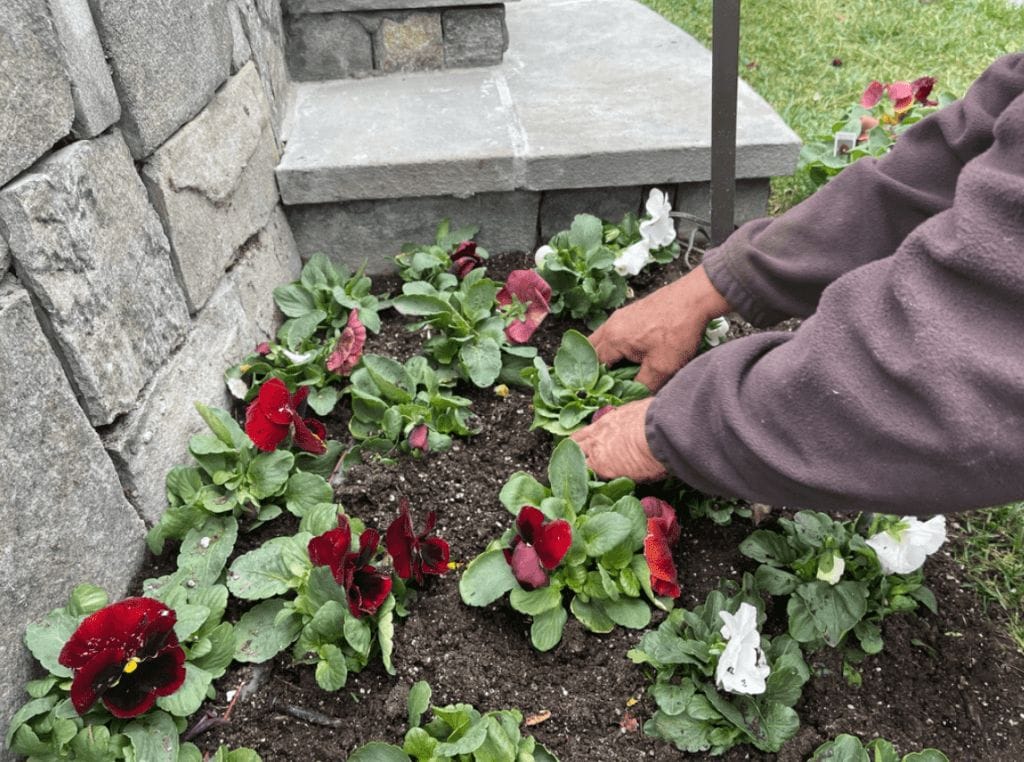It is no secret that 2021 will be a tough year with many unknowns. Experts predict record business closures and home foreclosures. For many of our customers, operating on a lean landscape budget is the sensible course of action. In this article I share some things to consider when planning to reduce costs in your landscape maintenance budget. They are listed from most essential services to least essential.
Service Visits
When considering what services to cancel or place on hold, landscape maintenance service visits should be last. An unmonitored landscape will have problems that get more expensive to solve as time passes. The most common problem is unmitigated plant growth. Any money a property saves in cancelled visits will often be lost once it’s time to schedule a service start-up clean up.
Another problem associated with cancelling service visits is that problems simply go unnoticed. With nobody living or working at the property, no one is taking notice of issues. You won’t know if your irrigation scheduling is bad, which will result in dying plants. In summer weather, plants can die in as little as two weeks from lack of water. You also won’t know if there are irrigation breaks or leaks. Left unnoticed, these issues will eventually lead to a re-landscape or a hefty water utility bill, or both.
Pro tip: If you have no choice but to cut service visit costs, we recommend talking to your account representative first. Depending on the type of property, it may be possible to adjust the service frequency. Another option would be to adjust the service visit length to meet a target budget. Experienced landscapers can be very creative. With your help, they can identify priority service areas within a property. If you don’t already have a landscape partner, search for a professional with credentials from the California Landscape Contractors Association.
Irrigation Repairs
The damage to a landscape from a failed irrigation system can be catastrophic. For this reason alone, it’s smart to factor irrigation repairs into your landscape maintenance budget. If you have cancelled landscape service visits, then the next best line of defense is to devise a seasonal irrigation maintenance plan. We recommend this approach instead of waiting for emergency irrigation scenarios. It is best to hire a reputable landscaping or irrigation contractor and agree on a per visit irrigation maintenance visit schedule. This way items that may be malfunctioning can be caught early. Moreover, in the event of an emergency, your service partner will already be familiar with your irrigation layout and will spend less time troubleshooting the problem. This means more savings for you.
To determine how much to budget for irrigation repairs, start by listing items you know you have needed most in the past. Do this for yourself, your property owner, or your tenants.
Emergency Budget
Murphy’s law says that, “Anything that can go wrong will go wrong.” For this reason, it is best to add a landscape emergency line item to your budget. When something breaks down, it is best to address it as soon as possible. Having earmarked funds will help make solving the problem less stressful. Emergency events can range from repairing a broken valve that costs a couple hundred dollars to removing a fallen tree that costs a couple thousand dollars. Talk to your landscape professional to discuss what a proper emergency fund might look like for your property.
Plant Feeding
Having a sound fertilization program for your landscape may seem like a luxury item. However, once you look at this closely, you may become convinced that it is essential. Plants are living organisms and they need food to sustain. In our experience, properties without a fertilization schedule will experience more problems. Just like humans are more likely to become sick with a poor diet and no exercise, unfed plants become more susceptible to disease and breaking down. This is why when a tree is experiencing disease, arborists may recommend a chemical systemic intervention that includes fertilization.
Tree or Plant Trimming
Having an annual tree trimming plan is always a good idea. Landscape professionals often agree that trees are the most valuable element in a landscape. Trees help the environment in tremendous ways. But, from a purely economic standpoint, they are also very valuable. Consider the cost of installing new trees. A 15-18-foot-tall tree can range anywhere between $1,000 to $2,000. It makes sense to care for your inventory.
Scheduled trimming can also be a preventative measure. Trimmers will remove dead wood from trees as part of their pruning tasks. Deadwood in a tree is dangerous because it’s brittle and will fall more easily. One reason palms are trimmed early in the summer is to remove their seed pods before they begin dropping. Seeds are not only a nuisance, but they can also be a hazard with slip-and-falls.
Ehancements

There are different types of landscape enhancements. Some properties may have them at the top of their priority list. Shopping centers, for example, rely on curb appeal and good first impressions. The importance of aesthetic is paramount and skipping annual flowers is not an option. Most other properties in a capital crunch will have enhancements at the bottom for their priority list.
It’s important to note that some enhancements, like mulching, are actually functional improvements. According to Kellogg Garden Products, mulching planters with a 3-4-inch layer can help save 50% of water use. This is an even greater water savings than smart watering technology that provides an average of 30%-40%.
In Conclusion
This is a generic sampling of things to consider when planning a lean landscape budget and should only serve as a starting point. Your own landscape budget may differ greatly depending on the needs of your property. We recommend making a personalized list of the items you have needed most in the past and develop your budget from there. For help in developing a landscape budget best suited for your needs, please feel free to contact us. We’d be happy to help!





